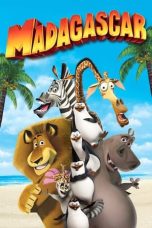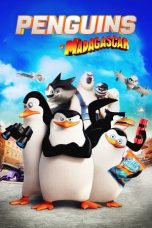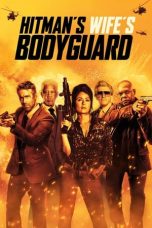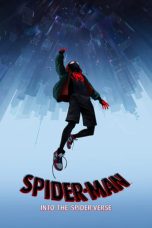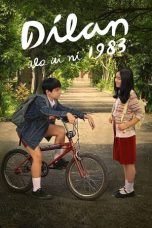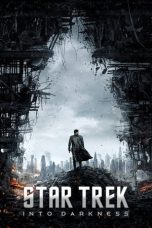- Source: Mad World
- Source: MAD World
- Source: MadWorld
"Mad World" is a 1982 song by British band Tears for Fears. Written by Roland Orzabal and sung by bassist Curt Smith, it was the band's third single release and first chart hit, reaching number three on the UK Singles Chart in November 1982. Both "Mad World" and its B-side, "Ideas as Opiates", appeared on the band's debut LP The Hurting (1983). This single was also the band's first international success, reaching the Top 40 in several countries in 1982–83. In the UK it was the 12th best-selling single of 1982.
"Mad World" has since been covered by various artists, including a 2001 version recorded by Michael Andrews and Gary Jules for the soundtrack of the film Donnie Darko; a 2003 single release of the song reached number one in the UK for three consecutive weeks and won Orzabal his second Ivor Novello Award. A 2021 rendition of the song was included on Demi Lovato's album Dancing with the Devil... the Art of Starting Over.
The cover photo was taken at Round Pond in Kensington Gardens (London, England).
Background
"Mad World" was originally written on acoustic guitar when Orzabal was 19 after being inspired to write a new wave song in the vein of Duran Duran's "Girls on Film". After a few false starts with Orzabal on vocals, he suggested Smith sing it and "suddenly it sounded fabulous".
"Mad World" was intended to be the B-side for the band's second single "Pale Shelter (You Don't Give Me Love)", but their record company stated that "Mad World" could be a single in its own right. The band then opted to re-record "Mad World" with producers Ross Cullum and Chris Hughes, the latter a former drummer with Adam and the Ants.
That came when I lived above a pizza restaurant in Bath and I could look out onto the centre of the city. Not that Bath is very mad – I should have called it "Bourgeois World"!
"Mad World" was the first single off the finished album. The intention was to gain attention from it and we'd hopefully build up a little following. We had no idea that it would become a hit. Nor did the record company.
Curt Smith's ad lib in the song's final chorus resulted in a mondegreen. Smith clarified the actual lyric in 2010:
With Mad World's again-resurgent popularity, I'm getting asked more frequently about the last line on the album version from The Hurting, a line which I occasionally also sing in concert. The actual line is: "Halargian world." (Not "illogical world", "raunchy young world", "enlarging your world", or a number of other interesting if not amusing guesses.) The real story: Halarge was an imaginary planet invented by either Chris Hughes or Ross Cullum during the recording of The Hurting. I added it as a joke during the lead vocal session, and we kept it. And there you have it.
Meaning
The song was influenced by the theories of Arthur Janov, author of The Primal Scream. The lyric "the dreams in which I'm dying are the best I've ever had" suggests that dreams of intense experiences such as death will be the best at releasing tension.
Reception
Cash Box said that the song "grows on you, expanding from a soft dance tune to a shy Britisher's confessions of his darkest dreams."
B-side
"Ideas as Opiates" is a song that originally served as the B-side to the "Mad World" single. This earlier version was produced by the band themselves, though it was later re-recorded for inclusion on The Hurting. The song takes its name from a chapter title in Arthur Janov's book Prisoners of Pain and features lyrics related to the concept of primal therapy. The song is musically sparse, featuring just a piano, drum machine, and saxophone. An alternative version of this song titled "Saxophones as Opiates" was included as a B-side on the 12-inch single and is mostly instrumental.
That's the chapter from Janov, and it's really a reference to people's mindsets, the way that the ego can suppress so much nasty information about oneself – the gentle way that the mind can fool oneself into thinking everything is great.
It really was all about that kind of thing – the psychological answer to religion being the opiate of the masses, whereas we thought ideas were, more than anything else.
Music video
The promotional video for "Mad World" was filmed in late summer 1982, in the grounds of Knebworth House. It was Tears for Fears' first music video, and features Curt Smith staring out of a window while Roland Orzabal dances outside on a lakeside jetty. A brief party scene in the video features friends and family of the band, including Smith's mother as well as his then-wife Lynne.
According to Curt Smith, "When we made the video in a country estate on the cheap, we bussed all our friends and family up from Bath and had a fun day. The woman who's having the birthday party in the video is my mum."
The music video was directed by Clive Richardson who was notable for his work at that time with Depeche Mode.
Track listings
7-inch: Mercury / IDEA3 (United Kingdom) / 812 213–7 (United States)
"Mad World" – 3:32
"Ideas as Opiates" – 3:54
7-inch: Mercury / IDEA3 (Ireland) / 6059 568 (Australia, Europe) / TOS 1411 (South Africa)
"Mad World" (World Remix) – 3:42
"Ideas as Opiates" – 3:54
7-inch double pack: Mercury / IDEA33 (United Kingdom)
"Mad World" – 3:32
"Mad World" (World Remix) – 3:42
"Suffer the Children" (Remix) – 4:15
"Ideas as Opiates" – 3:54
12-inch: Mercury / IDEA312 (United Kingdom) / 6400 677 (Europe)
"Mad World" – 3:32
"Ideas as Opiates" – 3:54
"Saxophones as Opiates" – 3:54
Charts
Certifications
Michael Andrews and Gary Jules version
"Mad World" achieved a second round of success 20 years after its release, when it was covered by Michael Andrews and Gary Jules for the film Donnie Darko (2001). While the Tears for Fears version featured synthesisers and heavy percussion, the Andrews/Jules version was stripped down; instead of a full musical backing, it used only a set of piano chords, a mellotron imitating a cello, very light touches of electric piano, and modest use of a vocoder on the chorus.
Their version was originally released on CD in 2001 on the Gary Jules album Trading Snakeoil for Wolftickets and again in 2002 for the film's soundtrack along with an additional alternate or remixed version, but an increasing cult-following spawned by the film's DVD release finally prompted Jules and Andrews to issue the song as a proper single. It was released through Sanctuary Records on 15 December 2003, in time for the race for the UK's Christmas number one, beating "Christmas Time (Don't Let the Bells End)" by the Darkness to take the title the following week.
This version was used in 2005 as the soundtrack for the opening section of the Season 6 episode "Room Service" of CSI: Crime Scene Investigation.
= Background
=For the soundtrack to the film Donnie Darko (2001), director Richard Kelly commissioned Michael Andrews, a San Diego musician and television and film composer who had worked as a member of a range of bands, including the Origin with Gary Jules (whose two solo albums he had produced), and the Greyboy Allstars. Kelly said he was confident that Andrews could do the job: "I met with Michael and I just knew right away that he was really, really talented and that he could come up with a really original score. He would allow me to be in there and be really kind of editorial with how I wanted the score to be." Andrews relocated to Los Angeles to work on the film between October and December 2000. As Andrews states, the low budget for the project encouraged him to play a diverse range of instruments for the soundtrack:
The film was pretty low budget so my portion of the money was pretty thin. I couldn't hire anyone, it was just me. I played everything; piano, mellotron, mini marimba, xylophone, ukulele, organ. I also brought in two female vocalists Sam Shelton and Tori Haberman. But no guitar because Richard said no guitar or drums; he just wasn't into it. I was down with that—I've played guitar my whole life.
Like many of his role models for soundtrack composing (such as John Barry and Ennio Morricone), Andrews wanted to put a song on his otherwise instrumental score. He eventually chose "Mad World", as Tears for Fears were one of his and childhood friend Jules' favourite bands growing up. Andrews enlisted Jules to sing the song, while Andrews himself played the piano; together they recorded the song in an hour and a half.
Despite being critically acclaimed, Donnie Darko was not a commercial success, but it sold very well on DVD and became a cult film, and demand grew for Andrews and Jules' cover of "Mad World" to be released as a proper single. This prompted Andrews to give the song an official release.
Jules said that he believed the song was easy for people to relate to: "I think it's a really beautiful example of a person struggling with the fact that life is mad. I honestly think it's one of the most beautiful songs I have ever heard and the way it's stripped down now just pins people." He went on to say, "Every so often a song with just vocals, piano and cello creeps up on you and says something about who you are, where you're going which stops you in your tracks."
= Chart performance
=Despite "Christmas Time (Don't Let the Bells End)" by the Darkness being the bookmakers' favourite to become the 2003 Christmas number one in the UK, "Mad World" upset the odds and took the title on 21 December 2003. It remained at number one on the UK Singles Chart for three consecutive weeks. The song's success in the UK did not, however, translate to the United States, where it reached number 30 on the Billboard Modern Rock Tracks chart in the issue dated 27 March 2004. However, it did reach number 1 on the Adult Alternative Airplay chart for the issue dated April 17, 2004.
Jules performed "Mad World" with Mylène Farmer on her Timeless 2013 Tour. In 2006, the song was included in the commercial to the video game Gears of War, which helped move it up the charts. A performance on the eighth season of American Idol by Adam Lambert also briefly increased its sales and interest in the song. The song reached No. 11 on the Rock Digital Songs chart.
The song charted again in Australia in 2020 following the success of The Masked Singer.
= Music video
=The music video was directed by Michel Gondry and was filmed at Hoboken Middle School (formally AJ Demarest School) in Hoboken, New Jersey in 2004. It begins with an aerial shot of the school; the bell rings and children go out onto the pavement. The rest of the video sees the children forming different shapes whilst Jules stands on the roof and watches from above. On two occasions the camera pans towards Jules looking down at the children, whilst a third pan away sees Andrews playing a piano as the song ends. The video has over 167 million views since it was uploaded to YouTube on 9 January 2006.
Curt Smith paid tribute to the Jules and Andrews version in April 2020 while staying home under general quarantine orders due to the COVID-19 pandemic. He and his daughter Diva performed an acoustic guitar rendition of "Mad World" using the style of Jules and Andrews, uploading the video to YouTube. Their version went viral, picking up more than a million views in one week, and four million views in the first month.
= Track listings
=CD1: Sanctuary / SANXD250 (United Kingdom)
"Mad World" – 3:04
"No Poetry" – 3:56
"Mad World" (alternate version) – 3:39
CD2: Sanctuary / SANXD250X (United Kingdom)
"Mad World" (Grayed Out Mix) – 6:45
"The Artifact & Living" – 2:30
"Mad World" (enhanced video)
= Charts
== Certifications
== Release history
=References
External links
Boston Globe article on the Andrews/Jules cover
MAD World is the international television service of MAD TV that broadcasts the 'best of MAD' programming to Greeks abroad. Unlike its counterpart in Greece, MAD World airs only Greek music content, no international music.
Mad World is on the air 24 hours a day, broadcasting all genres of Greek music (pop, hip hop, rock, etc.), 'rockumentaries' dedicated to famous Greek artists, and daily live shows that keep the audience informed about the events that take place in Greece. Mad World also focuses on the classic Greek hits of the last decade that are very popular among the Greeks worldwide.
Mission
Mad TV's production team is behind all the creative new formulas of Mad World and its ultimate goal is to make it the best satellite music channel. Mad TV wishes to spread Greek music all over the world through Mad World. What is more, it truly hopes to bring together Greek emigrants by informing their audience about current music events that take place in Greece, and/or the live appearances of the Greek artists abroad, thus benefiting both the Greek artists/singers and Greek songwriters.
Availability
It launched in December 2005 in Asia, Africa and Australia on UBI World TV and launched in New Zealand in 2008 when UBI World TV expanded their services to New Zealand. In June 2012, UBI World TV ceased operations, resulting in MAD World going off the air as UBI was the only provider (at the time) offering the channel anywhere in the world.
In December 2013, Mad World re-launched on Bell Fibe TV in Canada via a partnership with Canadian ethnic broadcaster Ethnic Channels Group.
Programs
Mad World features programs that are tailored specifically for the station:
MAD Video Requests is a show that lets viewers request their favourite music video via email and SMS.
MAD TOP 10 - The Top 10 Music videos from Greece.
MAD News has the latest music news on the hour.
POP World - Pop music and popular music videos.
3 apo 1 - three video clips from the same artist.
Κlassika - Classic hits from that last 20 years.
Jukebox - Viewers select their favourite from among two video clips.
Mad4Bouzoukia - Live performances.
Μousiko Κouti - All the latest news from the world of music and showbiz.
Polu Dunata - All the latest Greek pop hits.
Rythmos Εllinikos - Non-stop music mix of the latest hits from Greece.
Τa Εrotika - Ballads from the world of pop, rock, techno and modern Greek music.
Τop 5 has Five of the biggest hits from a specific artist, interspersed with interviews.
Trash Me - Late night segment with a logo of a dog, an innuendo for the derogatory Skiladiko (Dog music) genre, which features lower budget "trash" clips that did not traditionally enjoy much broadcasting. Also includes songs that established a cult following in the nightlife.
External links
Official site (in Greek)
MadWorld is a beat 'em up hack and slash video game developed by PlatinumGames, published by Sega, produced by Atsushi Inaba, and directed by Shigenori Nishikawa. It was released worldwide for the Wii in March 2009, and in Japan in February 2010. Although a commercial failure, MadWorld received generally positive reviews from critics. A spiritual successor, Anarchy Reigns, was released in 2012 for the Xbox 360 and PlayStation 3.
Gameplay
MadWorld is divided into several levels representing different parts of Jefferson Island that have been converted into sets for the game show DeathWatch. The player progresses through these levels in a linear fashion during the first playthrough, but can revisit any completed level to attempt to score more points or take on a harder challenge.
Most levels are open environments, allowing the player to explore them freely, although some sections of the level may require the player to earn a number of points before it will be accessible. A few levels feature motorcycle-based combat where the main character, Jack, is assaulted by foes as they race down a track or in a small arena. The player is challenged to beat the level's boss within a time limit, but in order to activate the boss fight, the player must accumulate enough points by defeating regular foes on the level. There are other challenges, bonuses, or mini-bosses that become active after the player accumulates enough points. A common feature of each of these levels is the "Bloodbath Challenge", a time-limited minigame that rewards the player for completing a specific type of activity with additional points. For example, the player may need to attempt to swing a bat at foes to knock them into a giant dartboard to score points, or to ensure foes are trapped in front of a speeding train. Outside of these challenges, the player is awarded points for every defeat of a foe. The number of points for beating foes increases by increasing the foe's power or using more unusual methods of winning. For example, while the player could throw an enemy on a wall, the player will earn significantly more points if they had previously forced a tire around the enemy.
The player controls Jack from a third-person perspective using the Wii Remote and Nunchuk attachment for attacks and movement, respectively. MadWorld does not make use of the Wii Remote's infrared sensor, as its developers found it unnecessary to pinpoint movements on the screen in order to attack. When certain special attacks are possible, the player is prompted to press a button or move the controllers in a specific fashion to complete the action. In boss fights, the player must trigger special finishing moves that engage their foe in a series of quick time events in order to weaken, dismember attached weapons or defeat the boss, called Power Struggles. These are possible against certain normal enemies.
The game features extreme, over-the-top violence, but designer Shigenori Nishikawa intends it to be seen in a comical light despite the dark tone of the game. For example, in a minigame called "Man Darts", players must hit enemies onto a giant dart board with a baseball bat to score points. Because of the intended level of violence PlatinumGames was unsure of whether or not the game would ultimately be released in Japan, stating, "In certain markets there are a lot of limitations on the amount of violence you can show, so we definitely have the Western market much more in mind."
MadWorld features highly stylized graphics that use a limited color palette of high contrast black and white with red, partially inspired by Frank Miller's Sin City graphic novels.
Plot
Three days before the game's event, the fictional Varrigan City became a target for a group of terrorists called "The Organizers", who severed the island city's transportation and communication ties with the rest of the world. They released a virus onto its population that would kill them in less than a day. However, the Organizers informed the populace that any person that killed another would receive the vaccine.
The city was quickly transformed into the stage of a recurring game show called DeathWatch, with announcers Howard "Buckshot" Holmes (Greg Proops) and former DeathWatch fighter Kreese Kreeley (John DiMaggio). The remaining citizens of Varrigan City and new hopeful ones become the show's contestants, hoping to become the top-ranked fighter in the game and win a large cash prize.
Jack Cayman (Steve Blum), a man with a chainsaw attached to his prosthetic arm, enters the games and manages to gain sponsorship from "Agent XIII" (Jim Ward). The game's organizers, led by Noa (Dwight Schultz), know Jack's motive is more than just to win, and learn that Jack works with someone on the outside. They come to learn that Jack was a former marine, police officer, and rogue agent, but now seems intent on a mission. Noa surmises that Jack is after Naomi Ann Boris (Kate Higgins), the mayor's daughter working in the city. While they plan to kill Jack, they realize he became an audience favorite, with many sponsors and viewers betting on his success.
Meanwhile, Jack meets Leo Fallmont (Danny Cooksey), a hospital doctor who was unwittingly trapped in the city but managed to obtain the vaccine. After telling Leo to stay low, Jack continues the mission. When Jack finds Naomi, he learns that she is the one watching the games and not getting in crisis. Jack leaves and continues to solve the case about the city's abnormal situation.
Meanwhile, the Organizers realize Jack as the reigning champ, who quit the games by signing on to the Chasers. As Jack nears the last battle against the reigning-feigning champ, the Black Baron (Reno Wilson), Agent XIII reveals himself to be Lord Gesser, an influential figure in politics and knows that the DeathWatch games were created to cause the attack, but admits that this particular incarnation of the games is solely driven by someone's greed, and passes on the name of Springvale to Jack and the Agency, which quickly recognizes the name as a pharmaceutical company and that they were the silent hand that had built (in anticipation of DeathWatch) much of the sets for the games as soon as the Organizers had released the virus.
After defeating the Black Baron at the end of the games, Jack blames Noa, who is shot and killed by Leo. After dealing with the armed forces, Jack disables the communication link with the Chasers and interrogates Leo. Leo tells Jack that his father was the president of Springvale Pharmaceuticals, who created both the virus and the vaccine, and was planning to use the televised DeathWatch event to show the effect of the virus as to blackmail anyone to pay for the vaccine under the outbreak. Leo admits that the company went bankrupt in the last presidential election and saw this route as the easiest way to recoup their losses. He is also at the games to be close to the action, fascinated by sports. Jack throws Leo off the tower to his death.
While the announcers complain about the irrelevance, Jack leaves Varrigan City.
Development
MadWorld was created by PlatinumGames, a studio founded by former members of Capcom's Clover Studio, in their attempt to make a game that would be "fun and attractive" for the Wii, but that would also have a high level of violence that would make it unique for the system. The game was produced by Atsushi Inaba, who had previously produced Viewtiful Joe, and directed by Shigenori Nishikawa, one of the designers of Resident Evil 4. The developers chose violence as the main theme of the title, but experimented with a variety of cartoon-like art styles to alleviate the violent content with a sense of humor, ultimately deciding upon a black-and-white aesthetic with splashes of red for blood. Inaba and Nishikawa acknowledged the influence of Frank Miller's Sin City in the work, but also noted they borrowed from both Western and Japanese comic book styles to create a unique style. Comic-book style text and sound effects are also used in the game. The main character, Jack, was designed to be "big and tough" rather than traditionally heroic, with an appearance that suggests he "has been worn down by the world."
MadWorld was developed primarily for a Western audience, and the team extensively analyzed American pop culture in search of material that was so extreme and unrealistic it produced a comedic effect. Inaba played a variety of games, such as Manhunt 2, to see how they portrayed serious violence and to avoid making those same choices with MadWorld. Nishikawa chose to focus entirely on combat, omitting extraneous puzzle-solving or collection elements, with the goal of making the game easy to play in short sessions. The game's motion controls were designed to be as intuitive as possible, with Inaba reflecting that "we've come to believe the Wii controller is actually more intuitive and more relevant for action games." An emphasis was placed on earning high scores, while "Bloodbath Challenge" minigames were used to incorporate additional variety into the game's design.
The game was developed using Softimage for creation of the game's art, and a custom engine built to handle the art aesthetic and limitations of the Wii's memory. The game's sets are completely modeled with complex lighting features, but only normal maps are used to draw the game, avoiding the high-processing costs of light maps or layered textures. This allowed the game's artists to have finer control of visibility and color balance in the game. Though the developers attempted to add reflection mapping into the game, they found it did not fit well with the comic-book style and dropped it. Explosions and other effects, normally created in other games using particle effects to achieve a factor of realism, were modeled with particles in MadWorld, but using specially-designed images to retain the comic book style.
To overcome the lighting issues, the main character of Jack was modeled with two different textures, one used when he was in a bright area, and second used in dark areas that highlighted the main lines of the character's face. Jack and other principal characters from the game were redesigned with the black-and-white features adjusted numerous times to make sure they did not simply blend into the background as the lesser enemies in the game. Other characters were drawn and modeled to be as destructible as possible, with numerous versions of each character having missing limbs or other bodily harm. These were put together in 2000-frame animations that were then motion-captured; movement from one animation to another was blended out with the use of Hermite interpolation. Blood spurts from each of the methods that Jack could use to kill a foe were each uniquely modeled to capture the appropriate trajectory for the type of injury, and often increasing the realistic amount of blood in order to make it stand out in the world. The spatters of blood on the walls, floor, and other characters was modeled within the game using a collision detection system and a complex system for how the blood would interact with Jack's clothing. Early builds of the game resulted in disorientation and eye strain due to the lack of colors. To avoid this, the developers limited the amount of on-screen movement and adjusted the game's textures to include more gradual changes from black to white. While some of MadWorld relies on the Havok engine for modeling physical interactions in the game, the developers found they had to resort to their own programs to capture some of the reactions and behaviors of the enemies for many of the unique killing methods.
Comparisons have been drawn between the game and Inaba's last project, God Hand, a comedy beat 'em up for the PlayStation 2. However, Inaba claims that while God Hand was developed for "hardcore" gamers, MadWorld is "a lot easier to pick up." The game's use of over-the-top violence was intentional to add humor to it.
The game's story was written by Yasumi Matsuno, famous for his design in the Ogre Battle series and a number of Square Enix titles. Matsuno was given two opposing guidelines to writing the scenario. While the development team ruled that violence should acceptable in the game's world, Inaba expressed his desire for violence to be "denied in the end" due to current views of violence in the video game industry. Matsuno combined the ideas for MadWorld's DeathWatch gameshow environment: violence is both accepted and required within the show, but not outside of it.
Proops and DiMaggio, who had previously worked together on animated films such as Asterix and the Vikings and Kaena: The Prophecy, were both contacted by the voice cast director Jack Fletcher to play the parts of the announcers for the North American and European release. While most of their lines were already scripted, the two were able to ad-lib during recording, with some lines being retained in the final game.
= Soundtrack
=The music for the game was composed by Naoto Tanaka, PlatinumGames' in-house composer, along with four different local artists—Ox, Doujah Raze, Sick YG, and Bandy Leggz. Tanaka wanted to "write in American style music and tried to avoid a true Japanese style". At the request of Inaba, the music styles included hip hop and rock, taking inspirations from the mashup album Collision Course from Linkin Park and Jay-Z. Tanaka created the backtracks first using Cubase SX and ACID, then gave these, along with the general theme of the level associated with the music, to the artists for them to add lyrics and other performances. Tanaka received feedback from the American branch of PlatinumGames to refine the music to get the Western style down. Music was then assigned for the various stages and boss battles, requiring some revision of the existing works to make the music more apt for that stage of the game. A total of 50 minutes of music was created for the game, and a soundtrack of the game's music was released along with the game in the United Kingdom and Australia. The soundtrack was released in North America on June 30, 2009, by Sumthing Distribution.
Controversy
On August 19, 2008, Sega announced that MadWorld would not be released in Germany. Despite the fact that Australia is also known for strict video game classification, the game was released there unedited, with an MA15+ rating for "strong bloody violence and strong coarse language".
In a preview, Eurogamer commented: "It's difficult to understand why there's so much controversy surrounding MadWorld when the violence is so very Tom and Jerry... It really is hard to be offended... because it's just so ridiculous."
On March 10, the National Institute on Media and the Family issued a press release expressing its disappointment in Nintendo for allowing MadWorld to be released on the Wii.
Reception
MadWorld has received positive reviews from critics. In its April 2009 issue, Nintendo Power gave MadWorld a 9/10 rating. IGN gave the game a 9/10, praising the style, gameplay, and music, but criticizing the camera and short length, though it mentions that the hard difficulty level lengthens the game and increases the challenge considerably.
About.com felt the game was more flash than substance, giving it a 3/5 and stating: "Divorced of its unique graphics and over-the-top presentation, this is actually a rather mediocre beat-em-up." Game Informer disagreed, praising the deep combat system and arguing: "for an amateur to become a talented executioner, you'll have to lash out creatively, prolonging your victim's death through multiple phases of pain. MadWorld runs the gamut in violence, taking an encyclopedic approach to its variety in kills. Some of the bloodletting will make you squirm uncomfortably." IGN opined: "MadWorld does not place emphasis on style over gameplay...there's plenty of fun, smart mechanics to back up the overwhelmingly slick look and sound of the title." 1Up.com praised the motion controls stating, "The immersive combat (aided by shockingly-fun Wii Remote and Nunchuk controls) would not have been as enjoyable if played on a traditional gamepad."
= Sales
=Sean Ratcliffe, Vice President of Marketing for Sega of America stated that, in terms of sales, "the first set of data for Madworld is very encouraging". The game sold around 66,000 copies in its first month of release in North America, according to The NPD Group. These sales numbers have been used by market research firm OTX Research to justify their assertion that hype and marketing do not translate into sales figures; MadWorld, while commanding the "highest level of unique interest" based on user input at IGN, ranks 41st in OTX's sales metric for all Wii titles. Sales of the game have reached 123,000 units in North America as of August 2009. MadWorld fared much poorer in Japan, where it debuted at number 33 on Japanese sales charts and only selling around 3,000 units during its release week.
Legacy
Despite low sales for both MadWorld and The House of the Dead: Overkill, Sega stated that it would continue to explore mature games for the Wii, according to Gary Dunn, a director at Sega Europe, noting that such games have a long tail in sales as such games become more discounted. On January 4, 2010, it was announced that Sega would not publish any future M-rated video games for the Wii. However, PlatinumGames announced a few days later that they would like to do a sequel to MadWorld, which ended up as Anarchy Reigns, a 3D fighting game for PlayStation 3 and Xbox 360 that was released in 2012 in Japan and 2013 in western territories.
In a 2019 interview, Inaba called MadWorld one of the most enjoyable projects he had worked on. On March 10, 2020, PlatinumGames celebrated MadWorld's eleventh anniversary with new artwork of Jack created by lead character designer Masaki Yamanaka.
Notes
References
External links
Official North American website
Official European website
Kata Kunci Pencarian:
- It's a Mad, Mad, Mad World 3
- It's a Mad, Mad, Mad World Too
- It's a Mad, Mad, Mad World 2
- It's a Mad, Mad, Mad World
- It's a Mad, Mad, Mad, Mad World
- The World Gone Mad
- Mangga lalijiwa
- Film dalam tahun 1963
- Daftar penghargaan dan nominasi yang diterima oleh Mad Max: Fury Road
- Rat Race
- Mad World
- It's a Mad, Mad, Mad, Mad World
- Mad Mad World
- MAD World
- It's a Mad, Mad, Mad World
- MadWorld
- Mad World (disambiguation)
- Mad World (film)
- It's a Mad, Mad, Mad, Mad Marge
- Gary Jules
- 1
- 2
Penguins of Madagascar (2014)
Hitman’s Wife’s Bodyguard (2021)
2001: A Space Odyssey (1968)
Star Trek Into Darkness (2013)
No More Posts Available.
No more pages to load.
